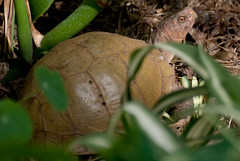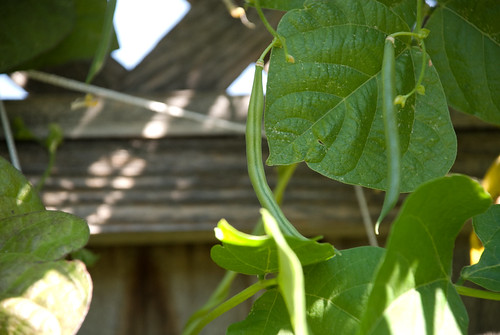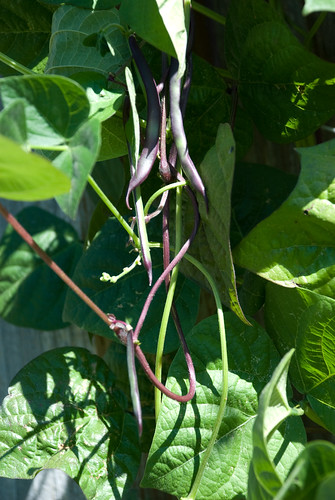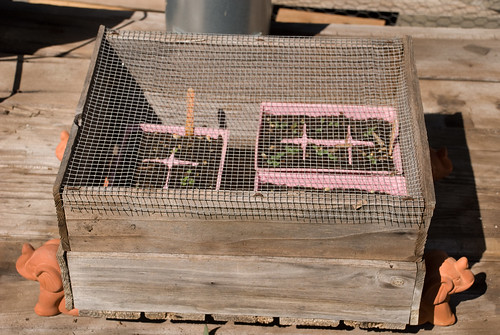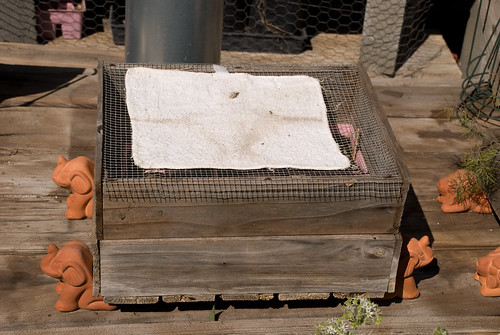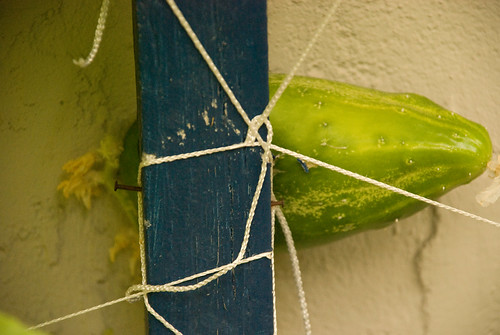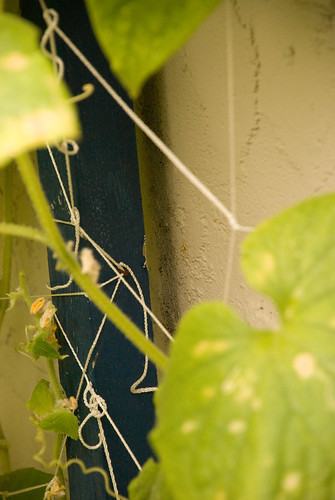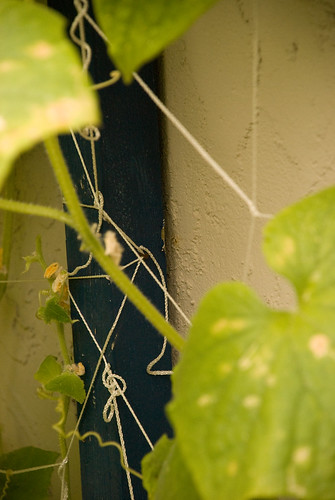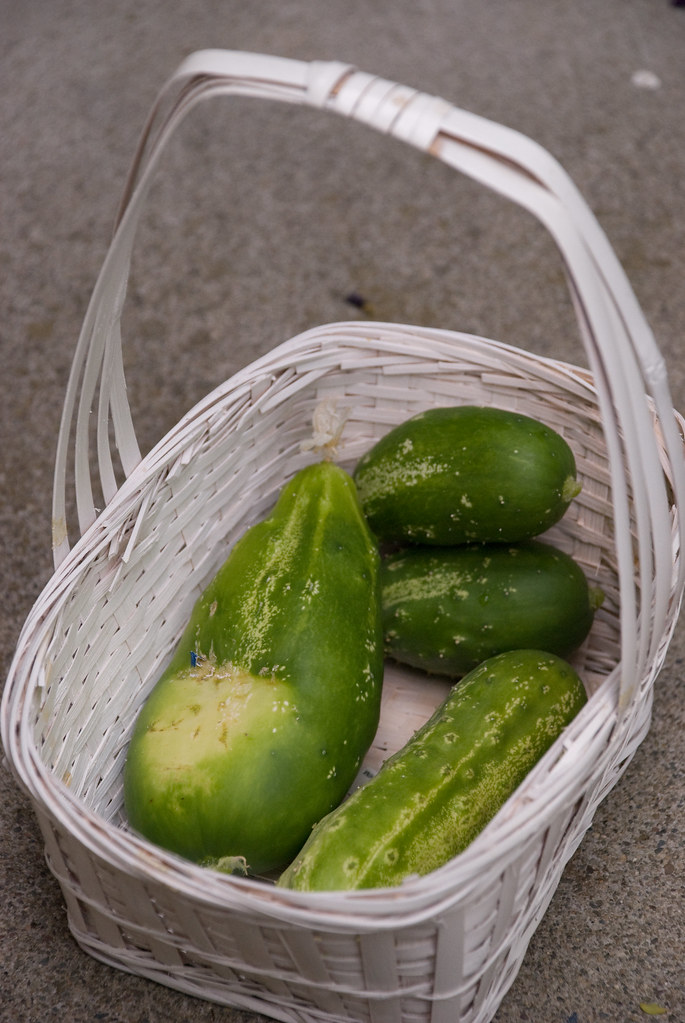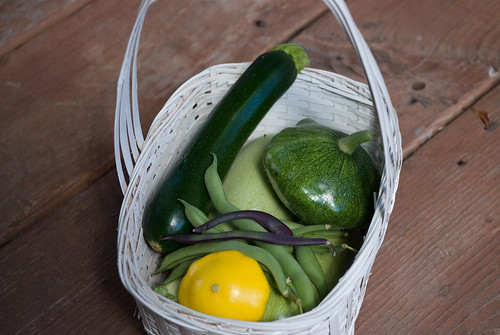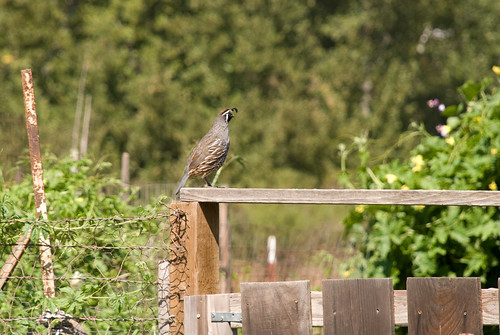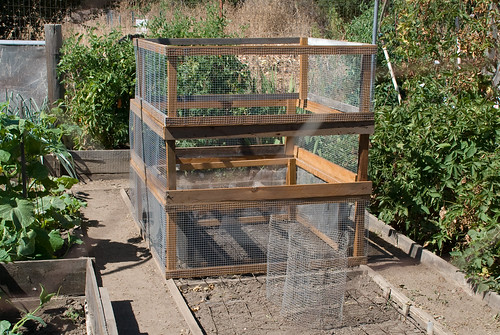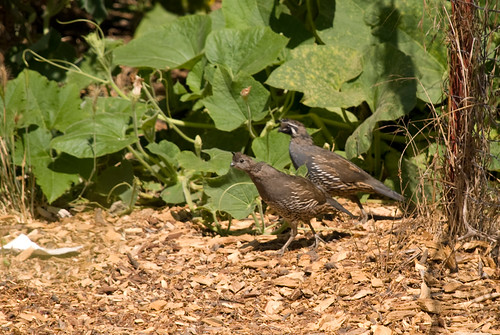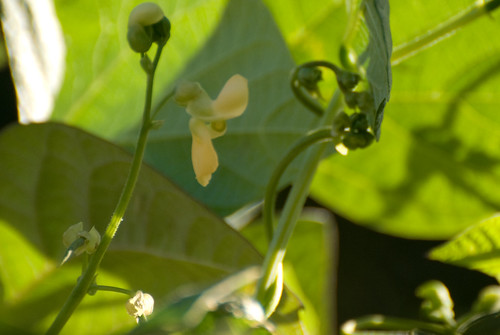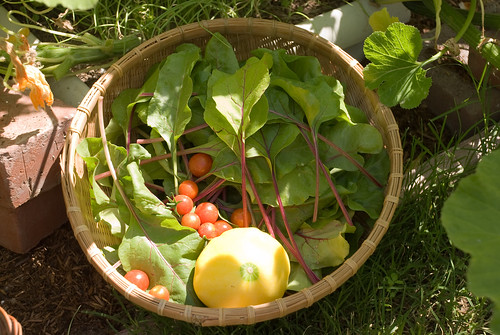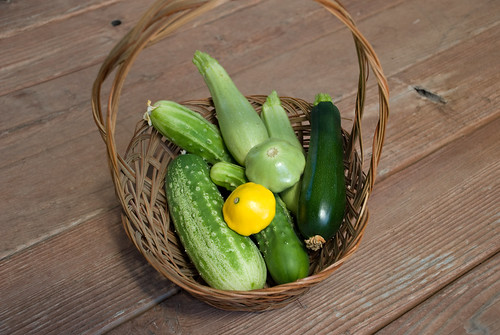In the hills above Cupertino, the McClellan Ranch Park is tucked in along side Stevens Creek (the creek, not the street), between
Deep Cliff Golf Course and
Blackberry Farm. The park used to be a working ranch back in the 30s and 40s and it still retains some of that flavor. The city of Cupertino has carved out an area for the
Rolling Hills 4-H club and its animals (ponies, chickens, ducks, goats, etc.), as well as space for a community garden. The park is also a bit of a birding hot spot. The
Santa Clara Valley Audubon Society is housed in the old farm house. Bluebird houses are mounted and hung all over the park. The riparian corridor of Stevens Creek that bordering the park is an invitation to all sorts of birds.
As part of an inter-jurisdictional plan to have linking trails for hiking and biking throughout the bay area, Cupertino's first segment of the
Stevens Creek Trail is being built starting at McClellan Road, heading south along the eastern edge of McClellan Ranch Park and continuing through Blackberry Farm. Being one who actually uses these sorts of trails, I applaud Cupertino for being involved in moving forward (ahead of some other cities - ahem!) to help build out this trail.
As the various entities made plans for the build out of the trail, they tried to take into account all sorts of environmental impact, but some things just weren't foreseen.
To make room for the trail along McClellan Road, they had to take down all the 4-H barns. These barns had been in place for years. They built new barns. To make room for the new barns, they had to move over into the community garden plots where residents had worked for years to improve the soil. To make space for the same number of community garden plots, they expanded the space out onto land that hadn't been put to the plow in decades. So, there was a lot of disruption and a fair amount of upset among the folks being jostled about to accommodate the changes for trail construction. Most folks just breathed a heavy *sigh* and adjusted.
As it happened, another event coincided with all this change and upheaval. The Audubon folks, birders, naturalists, and gardeners all noticed that the local population of California Quail had all but disappeared. Everyone missed them, so they came up with some thoughts on what was happening to the quail. A lot of feral cats were on the prowl in the park, so they decided to trap the feral cats and take them elsewhere. (No, I don't know where. I assume the humane society or other such entity.)
Well, it worked! The quail are back!
But so is every rodent species ever known to the area, simply because a couple of changes were made.
Remember the 4-H barns that were torn down? Well, for all those years, those barns housed some animals, but also all the feed, hay bales, and gear needed in the care and feeding of the animals. Feed gets spilled. Bales leak hay. Old gear gets piled in the corners. And the rats and mice turn the barns into palatial habitats. The rodent population explodes. The feral cats have plenty of prey, so their numbers explode. The cats prey on the mice and the rats. But the cats don't know that they're supposed to limit their diets to the mice and rats. They also feed on the "cute" rodents like the squirrels and the bunnies and they feed on the quail and other birds -- just whatever presents itself that seems like food.
The net result was that the cats were keeping the rodents in check (though nobody noticed that part of the equation), but they were also shrinking the population of quail. Now the net result is that the rodent population has exploded, and the quail population is making a comeback.
Now lets jump over to the community gardens. These gardens have been in place for many, many years. Some of the gardeners have held the same plot since the beginning. Each gardener gets a plot around which is a wire fence. Many gardeners opt to put in stronger fences. Some add iron gates they have found at salvage sites. For most, the fences are strictly to demark their plot, to stop other gardeners, children, pets, etc from wandering through their plots. For many, the grade of the fence shows a pride of "ownership" (if temporary) and the pride also shows in the tidiness and productivity within. Over the years, the only garden pests have been the gophers and, occasionally, squirrels.
Now we jump forward to last summer. The barns have been torn down and the rats and mice have been evicted, their homes are gone and their easy food sources have been swept away. The feral cats have been trapped and taken away. Every rodent in the area is now free to roam, looking for new food sources. The community gardens are suddenly invaded by squirrels, bunnies, and rats! And, of course, they still have to contend with the gophers. The gardeners are frantic in their efforts to actually be able to grow a crop. They bury fencing wire all around their plots. They bring in reclaimed bricks and boards. But every visit to the garden finds another spot where someone has dug under or climbed over and dined on their crops.
Many of the gardeners, in addition to reinforcing the perimeter fencing, are building all sorts of cages to go around and over the individual beds. These broccoli plants got a poultry wire cage framed with PVC piping.
These stacked cages, framed in wood and covered with hardware cloth, await the next planting cycle.
As you walk through the gardens, you start noticing the plots where the gardener has given up the fight in mid-season and where plots have been entirely abandoned.
Last year, the Master Gardeners attempted to do a trial of Edame (fresh edible soybeans), but the crop failure was complete. Despite all their efforts to add buried fencing material, add well-anchored row-covers, pile rocks and boards along the base of the perimeter fence, and all the other preventative measures, they harvested NO edame. It all went to bunnies, squirrels, rats, and birds. (You could see the beak-bites in what was left of the leaves.) This year the crop is winter squash. It's doing much better, but they had a couple of work days that were seriously focused on reinforcing the perimeter fence.
To be completely fair, I must also mention another animal that is stealing the crops from these intrepid gardeners. It is a two-legged animal. A number of the gardeners have strengthened the gates onto their plots and have installed shiny new hasps and padlocks. Walking along the paths, it is these plots that still have an abundance of produce along with a lovely garden habitat in the form of a chair or two and some sort of "garden decor."
And who can resist spending a day in the garden when you get a chance to bring home fresh, tasty produce grown with your own hands and to catch a view of these little guys dashing through the garden?
Nature, as it is wont to do, is in the process of re-balancing itself. The gardeners are starting to report seeing snakes around the community garden. So far, the snakes are small (pencil- to finger-thick), but even the small snakes can dine on baby rats, mice, and squirrels. And other birds are growing in numbers. I heard a hawk calling from up in a tree, so the hawks know there's plenty on the table below. Hopefully, the gardeners who gave up in frustration will come back and try again as things get back into a new balance.
